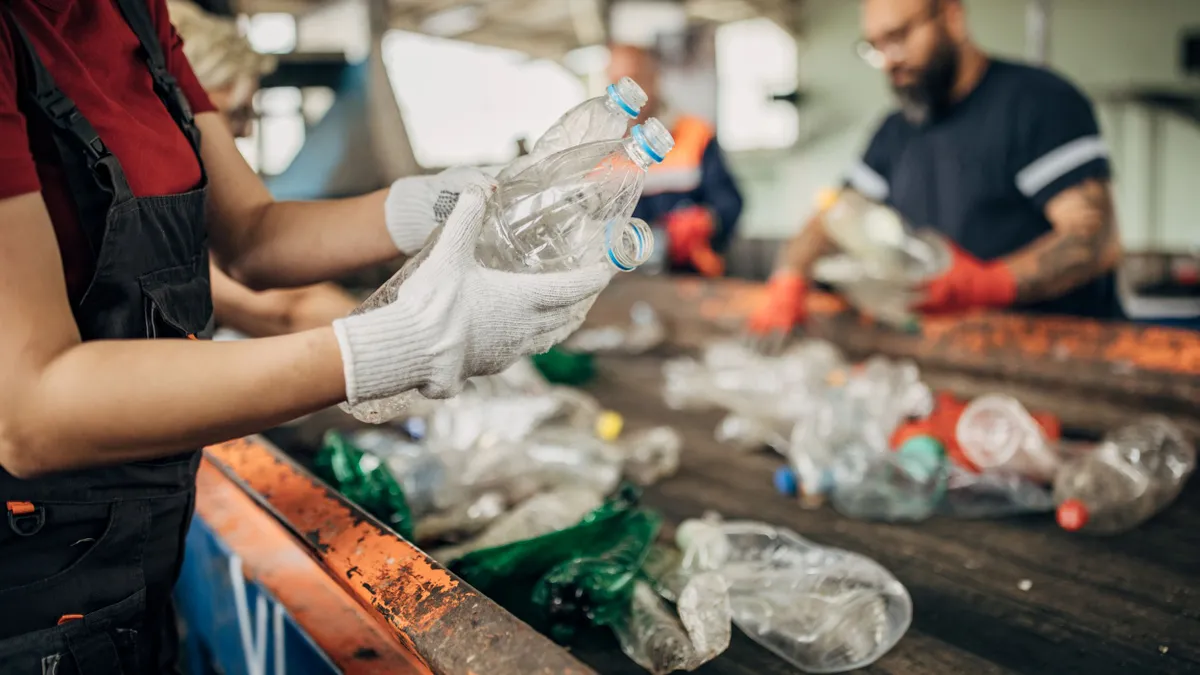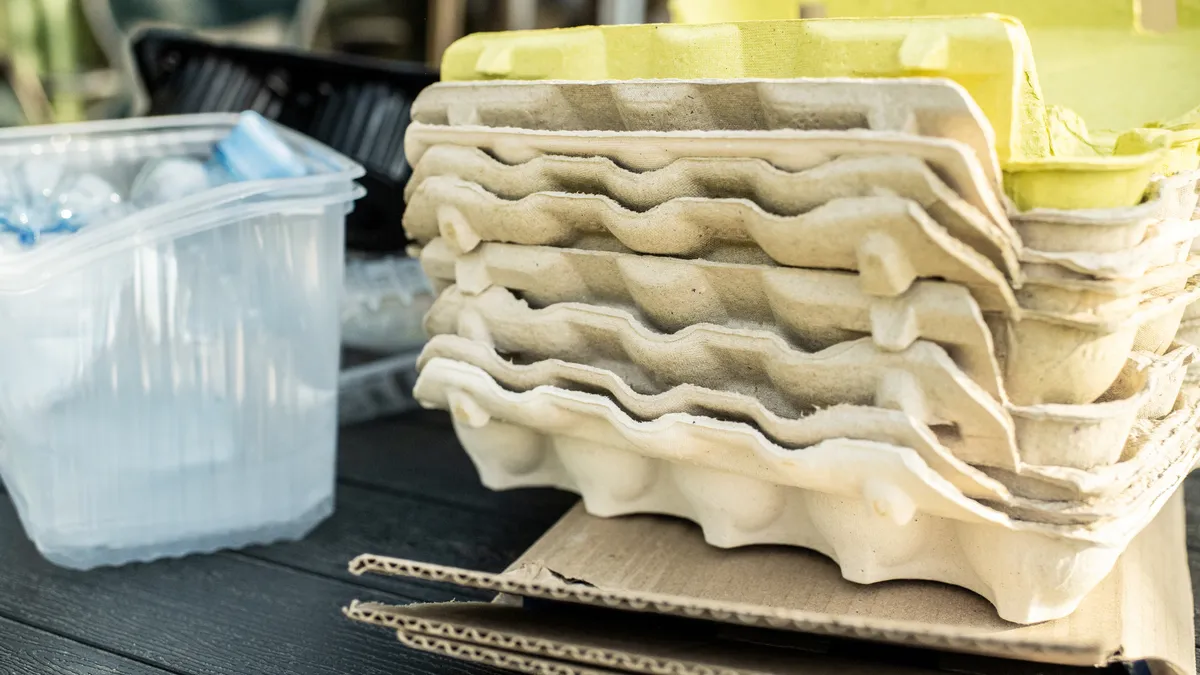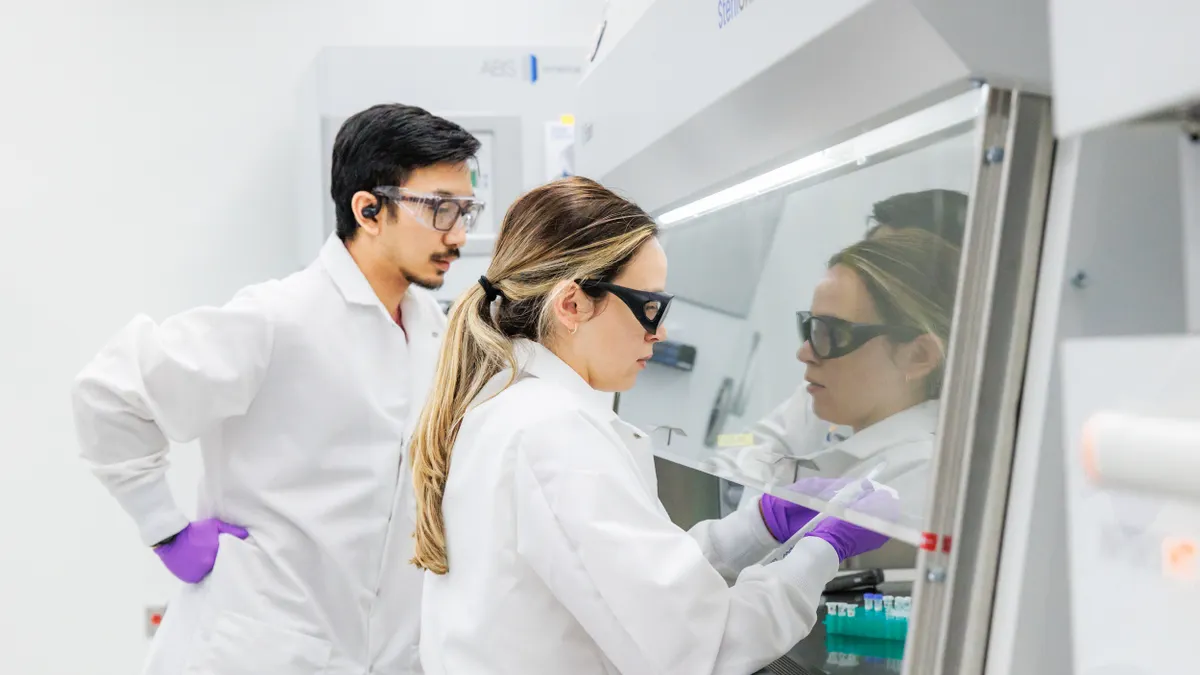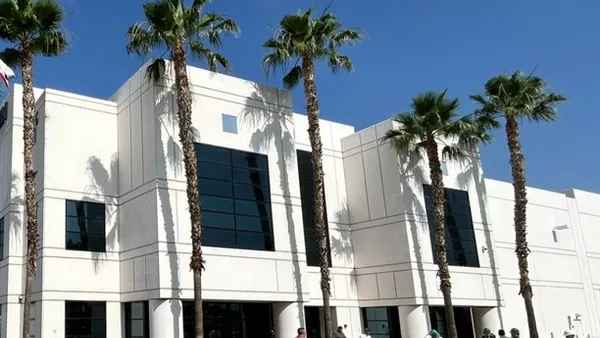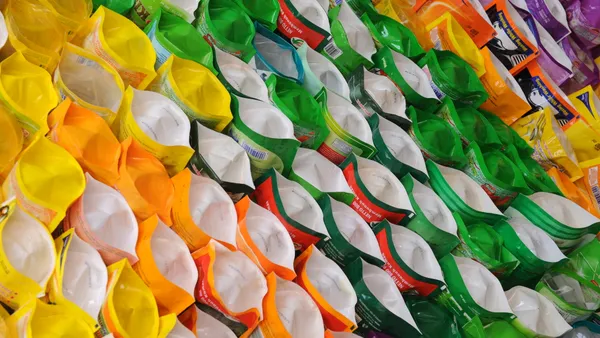Dive Brief:
- The U.S. Plastics Pact named the cost disparity between virgin and postconsumer recycled plastics as a key factor preventing more PCR use in plastic packaging in 2025, in a report the group released last week with strategies for upping PCR use in the United States.
- An increase in corporate sustainability commitments and government regulations has upped recycled content demand and pressured supply, contributing to PCR price increases, the report says. Long-term contracts are a strategy to manage price volatility, including the different seasonal movements of virgin and recycled plastic prices.
- Government intervention is also needed to boost PCR’s role in the circular economy, the industry consortium asserted, namely in the form of comprehensive extended producer responsibility laws.
Dive Insight:
PCR production still lacks the economies of scale evident in virgin material production, the report says, and that exacerbates the price disparity between virgin and recycled resins. Significant investment would be needed to change the dynamic, it says.
Low-cost private financing — such as through investment company loans — could help to bridge the gap, the report says. “In some cases, companies investing in the fund have priority in purchasing the PCR collected or processed on the financed equipment,” it says.
The new report draws insights from more than 100 of the U.S. Plastics Pact’s participants, called activators. These brands and packaging suppliers initially committed to achieving an average of 30% PCR by 2025. That target got pushed to 2030 in the group’s Roadmap 2.0, released last June. As of USPP’s December annual impact report, activators had achieved 11%, which was up from 9% the previous year.
The new report reinforces USPP’s growing calls for policy, such as recycled content mandates and EPR, as a solution for increasing PCR use. Through EPR for packaging programs, producers — usually brand owners — pay into the system to help manage the life cycle of the packaging, removing at least some of the financial burden from municipalities. The report compares the need for this type of governmental support for plastics recycling to the renewable energy industry’s growth over the last 20 years due to state and federal targets and subsidies.
EPR program structures that incentivize incorporating PCR into packaging could prompt brands to secure long-term supply contracts to reduce EPR fees, the report says.



